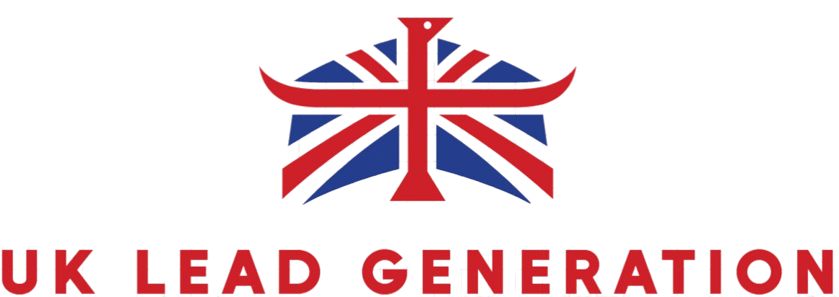5 Steps to Effective Social Media Advertising
Let's Set Up Your Lead Generation Strategy
Fill out the form below, and our team will get in touch with you to create a tailored solution for your business.
Navigating the world of social media advertising may seem overwhelming. However, with the right approach, it can become a formidable asset for your business.
This article presents five essential steps to help you identify your target audience, choose the ideal platform, and create compelling content that truly resonates.
You ll also uncover the benefits of social media advertising, explore various ad types, and learn how to analyze your results with precision.
Jump in to learn how to refine your strategy and maintain your competitive edge in this constantly evolving landscape.
Contents
- Essential Insights You Can’t Miss!
- 1. Define Your Target Audience
- 2. Choose the Right Social Media Platform
- Let's Set Up Your Lead Generation Strategy
- 3. Create Engaging and Relevant Content
- 4. Monitor and Analyze Your Results
- 5. Continuously Optimize and Refine Your Strategy
- Let's Set Up Your Lead Generation Strategy
- What Are the Benefits of Social Media Advertising?
- Let's Set Up Your Lead Generation Strategy
- Frequently Asked Questions
- What are the 5 steps to effective social media advertising?
- How do I define my target audience for social media advertising?
- Why are clear objectives important for social media advertising?
- What makes content engaging on social media?
- Which social media platforms are best for advertising?
- How can I analyze and adjust my social media advertising strategy?
- Let's Set Up Your Lead Generation Strategy
Essential Insights You Can’t Miss!

- Know your target audience to tailor your social media advertising strategy effectively.
- Choose the right platform that aligns with your target audience and business goals.
- Engage your audience with relevant and creative content to increase brand awareness and conversions.
1. Define Your Target Audience
Defining your target audience is a foundational step in crafting an effective social media strategy. This allows you to tailor your messaging and content creation efforts to meet the specific needs, preferences, and behaviors of your potential customers.
By doing so, you enhance brand awareness, boost user engagement, and set the stage for successful marketing initiatives.
When you identify audience personas effectively, you can connect with your audience across various social media platforms. This ensures that your marketing objectives align seamlessly with consumer interests.
Understanding your target audience extends beyond mere demographics; it involves diving into interests and values, and online behavior. Employing methods such as surveys and interviews can yield invaluable insights, while social listening tools enable you to monitor relevant conversations and trends within your niche.
This deep understanding significantly enhances your customer care approach, allowing you to address concerns proactively and engage with customers meaningfully. Ultimately, fostering this relationship cultivates trust and loyalty, positioning your brand as a customer-centric entity that genuinely values its audience.
In doing so, you align your marketing goals with the actual needs of consumers, paving the way for lasting success.
2. Choose the Right Social Media Platform
Choosing the right social media platform is crucial for the success of your social media marketing strategy. Each platform caters to different demographics, offers unique features, and supports distinct marketing initiatives that can significantly enhance your brand image and engage your audience.
Understanding the subtleties of platforms like TikTok, Instagram, Facebook, and Twitter can profoundly impact your brand’s outreach. For example, TikTok’s lively video format resonates powerfully with Gen Z, making it an ideal choice for brands aiming to connect with this younger crowd.
On the other hand, Instagram’s visual appeal allows brands like Nike to showcase their products through captivating imagery and influencer partnerships, effectively capturing the attention of millennials.
Facebook remains a stronghold for reaching broader audiences and fostering community-building efforts, while Twitter excels in real-time engagement and facilitating brand conversations. By aligning your marketing goals with the right platform, you not only optimize your reach but also cultivate authentic connections with your target audience.
Let's Set Up Your Lead Generation Strategy
Fill out the form below, and our team will get in touch with you to create a tailored solution for your business.
Take action today and implement these strategies to elevate your social media advertising game!
3. Create Engaging and Relevant Content
Creating engaging and relevant content is essential for capturing the attention of your target audience and enhancing user engagement. This not only drives sharing across various social media platforms but also reinforces your social marketing strategy.
This approach helps you build a strong online community while encouraging valuable user-generated content. This content amplifies your message. By integrating audience insights, you can craft a more personalized experience, ensuring that your content truly resonates with the individuals you aim to reach.
Effective content planning and scheduling are critical to maximizing reach and impact. When your content is strategically aligned with audience interests and overarching marketing objectives, it can significantly boost visibility and engagement.
By continuously monitoring feedback and adjusting your strategies accordingly, you can create a dynamic and responsive content ecosystem that thrives.
4. Monitor and Analyze Your Results

Monitoring and analyzing your results is essential for grasping the effectiveness of your social media strategy. This process enables you to measure success through various metrics, allowing you to optimize future campaigns based on valuable information from the data.
By closely tracking your engagement rates, you can pinpoint which types of content resonate most with your audience, enabling you to refine your messaging.
Conversion rates act as crucial indicators of how effectively your posts lead to desired actions, such as purchases or sign-ups. Evaluating social ROI (the return on investment from social media efforts) gives you a comprehensive view of whether your marketing investments are producing beneficial returns.
Utilizing tools like social media analytics platforms streamlines these evaluations, enabling you to adjust your marketing goals and strategies based on clear insights. Start tracking your metrics today to boost your future campaigns!
Ultimately, harnessing this data enables you to craft more effective campaigns, forge stronger connections with your audience, and enhance overall brand loyalty.
5. Continuously Optimize and Refine Your Strategy
Continuously optimizing and refining your social media strategy is crucial for maintaining a competitive edge in an ever-evolving landscape. Stay ahead by aligning your marketing initiatives with the latest trends, audience preferences, and overarching business objectives.
To achieve this, conducting a thorough analysis of your competitors can unveil invaluable insights into what resonates within your industry. By understanding how rivals engage their audience, you can pinpoint gaps in your approach and craft unique content that truly resonates.
Actively seeking feedback from your audience nurtures a two-way communication channel, enabling real-time adjustments based on their needs. This feedback loop can significantly enhance engagement and loyalty.
Keeping flexibility in your marketing budget allows for necessary experimentation and enables you to pivot strategies based on performance metrics. This adaptability ultimately enhances your effectiveness in reaching your desired goals.
Let's Set Up Your Lead Generation Strategy
Fill out the form below, and our team will get in touch with you to create a tailored solution for your business.
What Are the Benefits of Social Media Advertising?
The advantages of social media advertising are vast, offering you distinct opportunities to elevate brand awareness, generate valuable leads, and enhance customer care all while aligning with your broader marketing goals and social media strategies.
With targeted advertising capabilities, you can reach specific demographics, whether that’s millennials or local consumers, ensuring your marketing messages resonate with the right audience.
For example, imagine a local coffee shop employing Instagram ads to captivate nearby coffee aficionados, significantly boosting their visibility within the community.
This method not only renders your advertising campaigns more cost-effective but also nurtures greater customer engagement, as users are more inclined to interact with brands that reflect their interests.
Brands that leverage data analytics to fine-tune their online presence have witnessed impressive increases in customer loyalty and conversion rates, underscoring the profound impact of effective social media strategies.
What Are the Different Types of Social Media Advertising?
Social media advertising includes sponsored posts, video ads, and carousel ads. Each type offers unique ways to engage your audience and enhance your brand identity.
Sponsored posts blend into feeds, encouraging organic engagement. Video ads use captivating visuals to tell your brand story.
Carousel ads create interactivity, letting users swipe through images or messages. Each format boosts visibility and enhances user interaction.
To measure success, dive into click-through rates, engagement levels, and conversion rates. This will help you align these strategies with your marketing objectives.
How Can a Business Determine the Best Social Media Platform for Advertising?

Determining the best social media platform for your advertising efforts requires thoughtful consideration of audience insights, marketing goals, and engagement metrics. These factors guide you in selecting the most effective channels to reach your target demographics.
Analyzing user demographics, such as age, interests, and online behavior, is crucial, as they significantly impact your campaign’s success. For example, if you aim to connect with a younger audience, platforms like TikTok may prove more suitable. Brands targeting professionals might find LinkedIn to be a better fit.
By understanding the various features each platform offers like analytics tools, ad formats, and engagement opportunities you’ll be better equipped to align your strategy with specific marketing objectives. For instance, a beauty brand effectively using Instagram illustrates how visually-driven campaigns can elevate user engagement, highlighting the importance of selecting the right platform based on your unique goals.
What Are the Key Elements of Engaging and Relevant Content?
Key elements of engaging and relevant content include authenticity, emotional resonance, and the ability to stimulate audience engagement. These qualities are crucial for enhancing your brand’s social media strategy.
Such qualities not only capture attention but also foster a sense of community among your followers. For example, incorporating user-generated content amplifies relatability by showcasing real experiences that resonate with your audience. Actively seeking and sharing content created by your users creates a vibrant cycle of interaction and participation, deepening those valuable connections.
Let's Set Up Your Lead Generation Strategy
Fill out the form below, and our team will get in touch with you to create a tailored solution for your business.
Content planning is pivotal in amplifying these elements. By strategically scheduling and curating a diverse range of content, you can maintain a consistent voice and tone. This ensures that every post aligns with your core values while thoughtfully addressing your audience’s interests.
What Metrics Should Be Tracked and Analyzed for Social Media Advertising?
Tracking and analyzing metrics like engagement rates, conversion rates, and social ROI is essential for grasping the performance of your social media advertising. This understanding allows you to make informed adjustments that enhance campaign effectiveness.
These metrics offer invaluable insights into how your target audience interacts with your content, measures the economic return of your advertising efforts, and assesses overall audience sentiment. For instance, engagement rates can show you which ads or posts resonate with your audience, while conversion rates reveal how well those interactions translate into desired actions.
By consistently monitoring these indicators, you can adopt a data-driven approach that facilitates the ongoing refinement of your strategies. Each campaign s insights enable you to craft more compelling narratives and sharpen your targeting. This ultimately fosters a cycle of continuous improvement that is crucial for sustaining long-term success.
How Can a Business Stay Ahead of the Constantly Changing Social Media Landscape?
Staying ahead in the ever-evolving social media landscape requires engaging in regular competitor analysis, being adaptable in your marketing initiatives, and embracing continuous improvement practices that keep your strategies relevant and effective.
Using social analytics tools provides powerful insights that can transform your strategy. These tools help you identify emerging trends and user behaviors, allowing you to fine-tune your approach. By closely monitoring your competitors, you can discover their strengths and weaknesses, which helps you gain a competitive edge.
Agility is essential as user preferences shift. Adapting your content and marketing strategies to align with these rapid changes boosts engagement and fosters brand loyalty.
Ultimately, a proactive approach enables you to navigate the complexities of the market with confidence.
Frequently Asked Questions

The 5 steps are: defining your target audience, setting clear objectives, creating engaging content, choosing the right platforms, and analyzing and adjusting your strategy.
To define your target audience, consider demographics, interests, and behaviors. Use social media analytics tools to gather data on your current followers and customers.
Clear objectives help measure the success of your advertising efforts and ensure your content aligns with your business goals.
Engaging content is visually appealing, relevant to your audience, and encourages interaction through likes, comments, and shares. It can also include user-generated content and influencer collaborations.
The best platforms depend on your target audience and the type of content you want to promote. Popular options include Facebook, Instagram, Twitter, and LinkedIn.
Social media analytics tools provide insights on metrics like reach, engagement, and conversions. Use this data to identify areas for improvement and adjust your strategy accordingly.
Let's Set Up Your Lead Generation Strategy
Fill out the form below, and our team will get in touch with you to create a tailored solution for your business.
Ready to enhance your social media advertising? Implement these steps today or contact our team for personalized advice!






